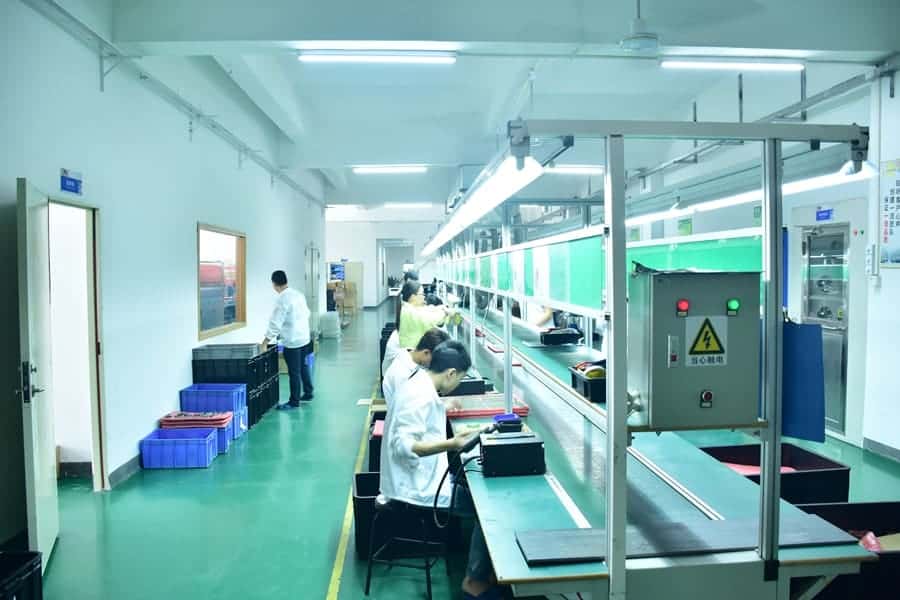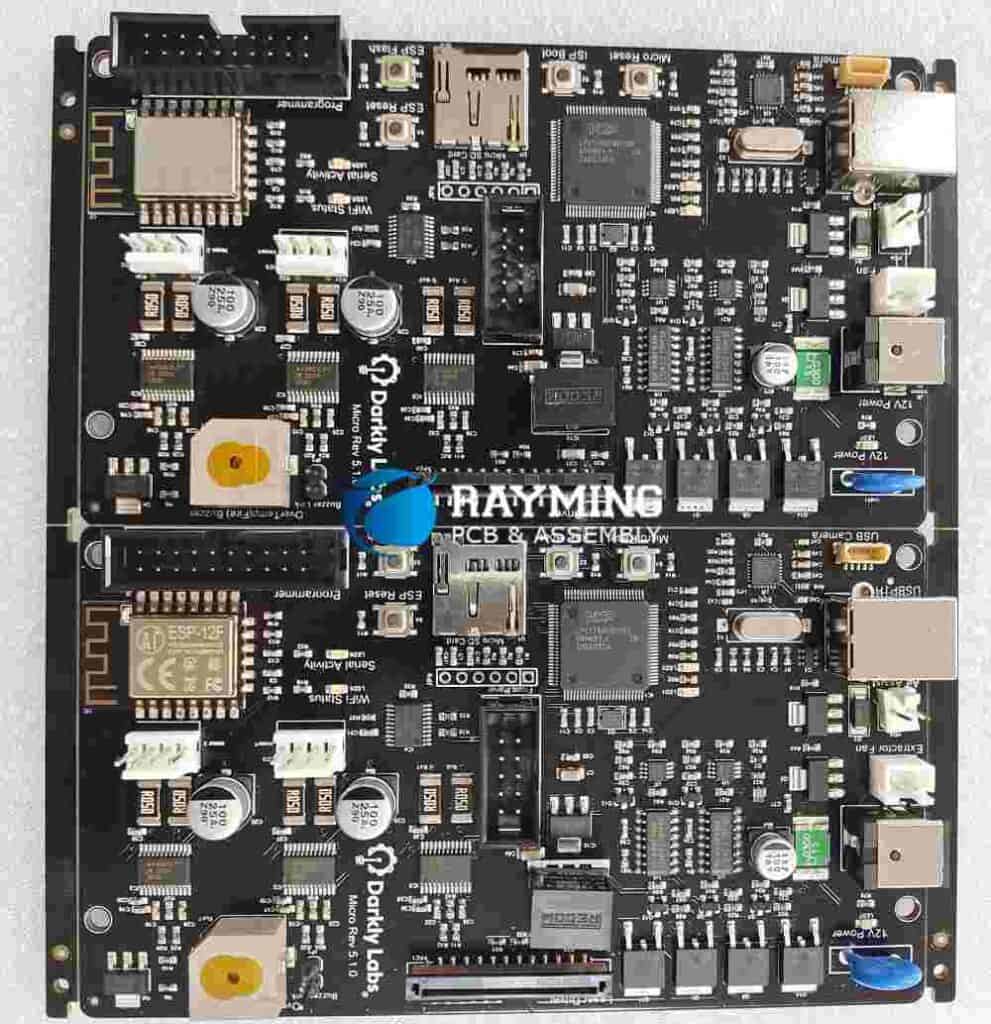Introduction
Printed circuit boards (PCBs) are at the heart of most electronic devices and products. To bring a PCB design to life and transform it into a functional circuit board, PCB assembly services are required. This typically involves populating the PCB with components, soldering them into place, testing the board, and more.
Choosing the right PCB assembly company is crucial for ensuring your finished boards meet your specifications, performance, quality and budget requirements. With so many vendors to choose from, selecting the best partner can be a daunting task. This guide provides an overview of factors to consider when evaluating PCB assembly companies and tips for making the right decision.
Key Factors To Consider When Selecting A PCB Assembly Company
Capabilities and Specializations
- Types of components – Make sure the assembler can work with your required component types such as through-hole parts, surface-mount devices (SMD), BGAs, connectors, etc.
- Board complexity – Choose a company with experience assembling boards of similar complexity, size and layer count. More complex boards require more advanced assembly equipment and processes.
- Prototyping vs. volume production – Prototyping has more flexibility but lower volumes, while volume production requires optimized, repeatable processes. Select a partner aligned to your needs.
- Special processes – If your boards require specialized assembly techniques like conformal coating, potting, press-fit inserts, etc., verify the assembler has those capabilities.
- Certifications – Look for companies certified to quality standards like ISO 9001, IPC 610 Class 2 or 3, ITAR, etc. This indicates their commitment to quality.
Assembly Quality and Inspection
- Soldering – The assembler should follow IPC soldering standards and inspect solder joints under magnification for defects. This ensures reliable connections.
- AOI – Automated optical inspection (AOI) during assembly detects defects early on. AOI also generates process data to improve quality over time.
- Testing – Electrical testing like in-circuit test (ICT), flying probe testing, boundary scan, etc. validates assembly quality and catches faults.
- X-ray – For BGAs and other hidden solder joints, x-ray inspection confirms proper placement and joint integrity beneath components.
- Traceability – Material traceability throughout assembly provides control and accountability over each PCB.
Supply Chain and Materials
- Component sourcing – Some assemblers can procure components for you while others require you to supply parts. Understand their capabilities and preferences.
- Inventory – Ask about their component inventory management. Quick access to parts avoids assembly delays when components are needed.
- Counterfeit avoidance – The company should have counterfeit detection processes like supplier audits, component testing, and more to ensure genuine parts are used.
- BOM review – Having engineers review your BOM helps catch issues early to avoid delays and ensures the BOM is optimized for manufacturability.
Delivery and Logistics

- Lead times – Understand standard lead times and factors that affect lead times like order quantities, production slots, procurement delays, etc.
- On-time delivery – Ask about their track record for on-time delivery. This indicates how well they manage production schedules and supply chain.
- Shipping and packaging – The assembler should have shipping expertise (by air, sea, road, etc.) and robust packaging to prevent damage in transit.
- Customs expertise – For international shipping, work with a company experienced in customs clearance to avoid border delays.
Communication and Engineering Support
- Technical expertise – Look for companies with an engineering team that can provide design for manufacturing (DFM) guidance, answer technical queries, detect issues early, and more.
- Project management – There should be dedicated staff for managing your projects, providing status updates, coordinating problem resolution, and ensuring satisfaction.
- Data access – Ask about providing customers real-time visibility into order status, test results, traceability data, and other key manufacturing metrics and documents.
- Continuous improvement – The company should proactively solicit customer feedback and have a system to implement improvements.
- Proximity – Closer proximity can facilitate communication, project coordination, engineering collaboration, and supply chain integration.
Cost Considerations
- Pricing structure – Understand how pricing is structured – per component, per board, volume tiers, special process fees, etc. Get detailed quotations.
- Component costs – If procuring components, compare markups over distributor/manufacturer pricing. Reasonable margins are 10-20%.
- Minimum order quantities – Check for MOQ requirements which affect prototyping costs. Lower MOQs allow smaller test runs.
- Value-added services – Compare fees for additional services like DFMs, test development, expedited delivery, inventory programs, etc.
- Payment terms – Acceptable payment terms are important for managing project cash flow. Inquire about options.
Company Background and Viability
- Years in business – Generally, companies with more years of experience are better established and lower risk. But new companies can also deliver excellent results.
- Industry reputation – Research online reviews, brand reputation in the industry, feedback from past customers, awards, certifications, etc. to evaluate overall quality and service.
- Financial stability – Indicators of financial health like credit ratings, backing by a parent company, past revenue, etc. reduce concerns over company viability long term.
Top PCB Assembly Companies To Consider
Some leading PCB assembly providers to consider across North America, Europe, and Asia include:
North America
- EIT (Engineered Interconnect Technologies)
- Epectec
- San Diego PCB
- Sierra Circuits
- Sunstone Circuits
Europe
- Asteelflash
- AT&S
- Kitron
- Scanfil
- Season Group
Asia
- Celestica
- Flex
- Jabil
- Sanmina
- WKK Technology Ltd
This covers some of the major players but there are many other capable PCB assembly companies to evaluate both regionally and worldwide. The ultimate choice depends on your specific requirements, priorities and location. Developing a strong partnership with the right provider is key to ensuring your PCB assembly needs are met with high quality and reliability.
Questions and Answers

Q: What are some red flags to watch out for when choosing a PCB assembly company?
A: Some red flags when evaluating PCB assemblers include:
- Lack of clear quality certifications like ISO 9001
- Unable to provide references from past customers
- Vague or inconsistent information on their capabilities
- Significantly lower pricing than competitors (could indicate quality issues)
- Unwillingness to share details about their processes
- Lack of proper equipment for the type of assembly required
- Disorganization or lack of project management discipline
Q: Should I choose the cheapest PCB assembly option?
A: Cost is a key factor but quality, reliability, capabilities, and communication are also critical for avoiding issues. The cheapest assembler may lack in these areas. Weigh cost against all evaluation criteria instead of basing the decision on cost alone. Paying slightly more for better quality and service can prevent headaches down the road.
Q: What can I do to make PCB assembly go smoothly?
A: Some best practices to help your assembly projects go smoothly include:
- Engage the assembler’s engineering team early and take their DFM feedback into account
- Build in adequate schedule margin and plan for potential delays when estimating lead times
- Supply quality component data (BOMs) optimized for procurement and production
- Proactively communicate any high-risk areas of concern to focus attention on them
- Maintain open communication channels for status updates, data sharing, and fast problem resolution
- Clearly define testing, inspection, quality, documentation, and other deliverable requirements upfront
- Plan design reviews at multiple stages to allow issues to be caught early before they impact cost and schedule
Q: How can I reduce costs for low-volume or prototype PCB assembly?
A: Ways to potentially lower costs for low-volume and prototype board assembly include:
- Using an assembler focused on prototyping with lower minimum order quantities
- Supplying components yourself instead of having the assembler procure them
- Prioritizing placement speed over aesthetics to simplify assembly process flow
- Waiving certain testing or inspection criteria that are less critical
- Accepting panels instead of individually depanelized boards
- Optimizing your BOM to use more standardized components
- Allowing more flexibility on delivery lead times
- Reusing previous design data where possible
- Negotiating price discounts based on potential future production
Q: What information is needed from me to get an assembly quote?
A: Key information assemblers need to provide an accurate quote includes:
- Gerber files, bill of materials, placement files, assembly drawings
- Layer count, board thickness, board dimensions, and quantity required
- List of any special assembly processes required
- Type of components – leaded, SMD, BGA, connectors, etc.
- Quantity breakdowns of each component value and package size
- Any requirements for programming firmware or loading software
- Testing and inspection criteria
- Packaging and shipping requirements
- Production schedule needs and lead time expectations



0 Comments